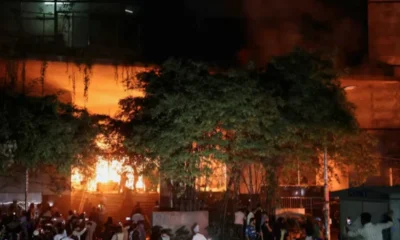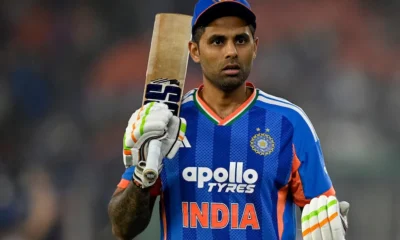It’s not just students, parents and schools but various education boards which are on an overdrive to secure 100 percent marks for students. This is an unhealthy trend that needs to be discouraged
By Meha Mathur
What happens when, after a year of nerve-wrecking hard work for entry to the exclusive 98 percent marks club, you miss the magical figure by a few marks? Or, you do manage to crash into that league but still don’t make it to the admission list of premier institutions in Delhi like St Stephens, Delhi, or Sri Ram College of Commerce (SRCC) just because the cut-off is 99 percent, or even 100 percent? The impact can be damaging to a young person’s psyche.
In recent years scores of students have experienced this fate. Take Akash’s case. When he secured a “measly” 95 percent and was deemed ineligible for admission to any of the prestigious and happening North Campus colleges in Delhi, it left him dejected to the core. He took a life-changing decision to not join any regular college and opted for a correspondence course along with preparing for a chartered accountancy exam. Another student who scored in the early 90s said there was a pall of gloom over her home. “It seemed someone had died. No one was talking to each other.”

While these and thousands of other students would be questioning themselves, wondering “what is wrong with me”, it’s the education boards that should also be put to scrutiny for the marking pattern they adopt. As recent media reports suggest, most of the boards—both state and central —are in competition mode. They want to ensure that their students should be in the race for admissions at all-India level. So much so that students of one single school—Bharatiya Vidya Bhavan in Erode, Tamil Nadu—managed to grab about 100 seats at the coveted SRCC.
“Boards are themselves under pressure to mark leniently. Given the fact that students need to secure admission in institutions of higher learning like IITs and central universities, if they mark strictly, the ultimate losers will be students. Low marks are leading to cases of suicides and depression. Which is why society is not questioning the current trend of lenient marking,” says Dr S Mahapatra, associate professor of Geography, Indira Gandhi National Open University, New Delhi.
Prof Binod Khadria , professor of Economics and Education at Jawaharlal Nehru University, agrees that the boards want to ensure their students gain maximum seats in engineering colleges and other institutions. There is also the competition to win over students from central boards. For schools too that is the motivating factor.
Beyond instant gratification
How do boards and schools achieve mind-boggling performances from their students ?
Miloni Sanghvi is a postgraduate student in communications studies at Xavier Institute of Communications (XIC), Mumbai, who has done her graduation in commerce from HR College and school education from the Maharashtra Board. She says a large number of students get 98 percent in the Maharashtra Board exams because they are trained or take coaching classes to become mark scoring machines . “These classes train you the fine points of answer writing—how to write in point form and what to underline. The entire focus is on answer writing, not on what you have understood about the subject.”
Miloni’s sister Vyoma, a class XII student of humanities at Xavier College, says this leads to the mentality that “this is the only way to write answers”. But she is realistic enough to understand that the golden run with marks won’t last in college. “I feel that when boards give such high marks, students think they have reached perfection. It leads to false expectations. And in college there is a big setback when marks drop.”

So, even young minds understand the dangers of chasing unrealistically high percentages. It manifests itself in a student’s shallowness about a given subject being exposed in later life and his/her inability to grasp and write logically. As Prof Mahapatra admits: “The flip side of this is that students, after scoring upwards of 90 percent in English, can’t draft an application. This trend holds true for any subject. And they lack the critical ability to think.”
It also perpetrates corruption and malpractices, as that iconic photograph of an examination center in Bihar, showing relatives and friends helping candidates, precariously perched from first and second floor windows, suggests.
Given this scenario what happens to quality of education? It’s not just that more often than not students who don’t really have the aptitude for a given course will get accommodated but seats are added in existing courses thus skewing the teacher-student ratio further. “There is as such a dearth of teachers. And you take in more and more students by giving them higher marks but not increasing capacity by recruiting teachers,” rues Prof Khadria.
No easy answers
Education being a concurrent subject, it’s difficult to come up with a solution that is agreeable to the states. No state board would want its students’ prospects jeopardized for the cause of quality and excellence. But even then, some form of standardization or parity between boards is required. One way, as Prof Khadria suggests, is to appoint members from other states on the state boards to ensure checks and balances.
But Dr Jayanti Banerjee, a psychology teacher with a Delhi school and a counselor with the CBSE, sees difficulties in establishing parity. “We have to take into account our country’s diversity. Children studying under state boards are not fluent in English, but in their mother tongue.”
Prof Khadria believes that to bring in accountability, we should start naming the people who man the various education boards. “The board itself is a faceless body. We have to think in terms of who are they. Start naming them and responsibility will come.”
Since the need to score higher stems from shortfall of quality institutions, the question that crops up is, why not have a better geographical spread of institutions of higher education? Several factors are at play here.
Prof Mahapatra says that despite the desired goal of spending 6 percent of the GDP on education, the spending doesn’t exceed 3 percent on the entire education sector. This impacts physical infrastructure and teachers’ availability even within existing public institutions, leave aside starting new ones. The big casualty is quality higher education institutions in the public sector.
But Prof Khadria adds another dimension to this issue: “We have been hearing of the need to open new universities in every nook and corner. To my mind that is against the very concept of university or higher education institutes. As such, our universities are smaller, compared to, say, China. It’s also against national integration. Think of students who are coming from villages to Delhi. They will grow so much in terms of their thinking.” Adding that geographical mobility is always good for growth, he says: “Why are Indian students going abroad? Can we open a Harvard here? Why should we?”
Ultimate beneficiaries
The race for marks and dire shortage of seats in public institutions has only benefitted private universities cropping up across the country, offering not just professional courses like medicine, engineering, law and design, but also liberal arts courses like history and English. And families with the wherewithal to spend Rs 10 lakh for such courses are happy to send their wards to such institutions with plush infrastructure.
There is no harm in these institutions if they maintain transparency, feels Prof Khadria. “If people with high salaries and can go for these courses, it will only reduce the burden on public institutions. And if these institutions, who get land at throw-away prices, offer scholarships to needy students, they will also be fulfilling their promise of social service. So don’t throw the baby with the bath water and say all private universities are bad.”
—With inputs from Prabir Biswas


 India News12 hours ago
India News12 hours ago
 India News13 hours ago
India News13 hours ago
 India News15 hours ago
India News15 hours ago
 Latest world news7 hours ago
Latest world news7 hours ago
 Latest world news15 hours ago
Latest world news15 hours ago
 Entertainment6 hours ago
Entertainment6 hours ago
 Cricket news5 hours ago
Cricket news5 hours ago
 Cricket news4 hours ago
Cricket news4 hours ago













